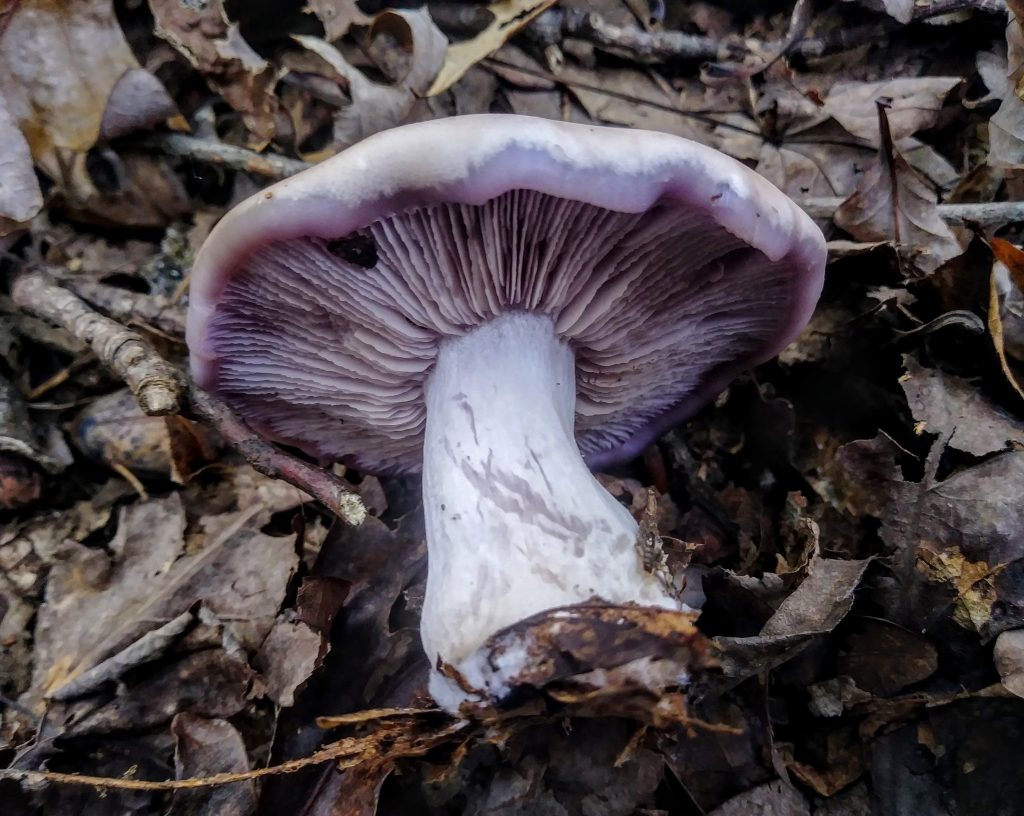More than 3,000 unique varieties of mushroom have been successfully identified in North Carolina. About 200 are considered commonly edible. At least 14 species are considered to be poisonous. In only one semester, I identified nearly 80 species with only about 10% of which were thought to be poisonous. Poisonous species found in the Guilford College Woods are as follows:
- Coker’s Amanita
- Chocolate Brown Slime Mold
- Yellow Caesar
- Dry Woods Russula (poisonous when raw/uncooked)
- Gemmed/Jewelled Amanita
- Lilac Bonnet
- Yellow Patches Amanita (probably)
- Viscid Violet/Spotted Cort
- Jack-O-Lantern
- Greenfoot Fibrecap

Some of the edible species include:
- Oysters
- Indigo Milk Cap
- Common Puffballs and Pear-Shaped Puffballs (before they turn green on the inside)
- Beefsteak Fungus (that smells and tastes like beef)
- Wood Blewit
- Witch’s Butter (when cooked)
- Dark Honey Fungus
- Saffron Milk Cap
- Flat-Topped Fairy Club
- Chicken-of-the-Woods



Thought some seem to be easy to identify as either edible or poisonous, I had to make categories for those as well as the inedibles (not poisonous, but physically unable to eat), the nonpoisonous (one’s that won’t kill you but probably aren’t good), the toxic (poisonous as well as harmful to breathe or touch, like Chocolate Brown Slime Mold), and a large number of edibility unknown (there’s really little information for many fungal species). The 8 species that were considered unknown in edibility were:
- Shining Waxcap
- Black-footed Marasmius
- Bleeding Bonnet
- Onion-Stalk Lepiota
- Coral Pink Polypore
- Mycena amicta
- Yellow Cracked Pholiota
- Boletus curtisii

With names like Purple Jellydiscs, Bonfire Scalycaps, Stinky Squids, and Scarlet Elf Cups, it only adds to the wanderlust of this place. Please be careful when searching for mushrooms! I have the scars to warn to be careful and again, never eat any mushroom without having a 3rd or 4th expert opinion!